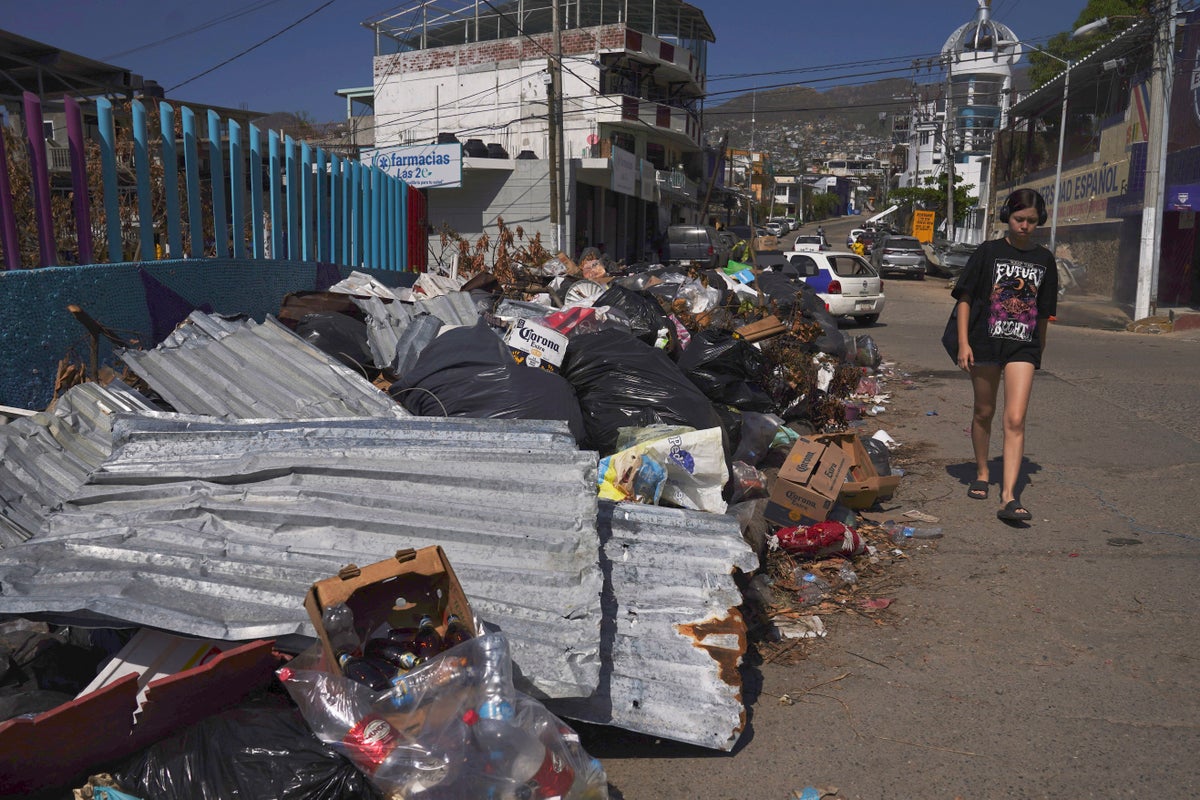
Mexican President Andrés Manuel López Obrador spoke ebulliently Wednesday about the recovery of Acapulco after Hurricane Otis smashed into the resort on Oct. 25, killing 52 people.
But some residents still don’t have running water, sewage treatment is still deficient, tons of garbage and debris remain in the streets, and few hotels are fully open.
López Obrador predicted the once-glamorous Pacific coast city would be 100% recovered by March, and claimed many residents’ homes are now in better shape than before the Category 5 hurricane hit.
“Without doubt, in March, 100 (percent)," the president said at a news briefing in Acapulco. “The majority of people's houses in Acapulco are now better than they were before the hurricane.”
While hundreds of tons of debris have been removed, and some of the shattered, looted stores have re-opened, things are far from close to normal.
Acapulco's economy depends almost completely on tourism, and there were few in town.
Gerardo Pérez Pacheco, of Portland, Oregon, comes to Acapulco every two years. He came again this year, and said he was impressed by the clean up efforts — even though the city is quieter than normal.
Others, like José Luis Torres Parra from the northern border town of San Luis Río Colorado, came as an act of solidarity with Acapulco. Torres Parra, who brought his family with him, said Acapulco remains one of the most beautiful bays in the world.
The government estimates that by New Year's Eve, there will be about 4,500 hotel rooms operating in 127 hotels, many of which are only partly open after Otis' winds blew out windows and even walls.
That is extremely optimistic, given that local officials estimated there are currently only 2,890 rooms available in 91 hotels, many of which are occupied by government workers called in to oversee the recovery effort.
Even the president's estimate is a drop in the bucket compared to the estimated 19,000 hotel rooms — and 10,000 condos and temporary vacation rentals — that Acapulco had operating before the hurricane.
While many Acapulco residents have had to wait in line for government aid payments and batches of housewares and home appliances — López Obrador sent envoys to China and Korea to buy enough stoves and refrigerators to hand out — the hardest wait is for the families of 32 people still listed as missing from the hurricane.
Relatives say they have seen little progress in finding their loved ones. Mexico's navy said it has recovered 17 bodies at sea, but it has not been able to locate four of the 15 boats that sank in the bay with people reported aboard.
“It seems like they only tell us half of what's going on,” said Enrique Andrade, whose sister Abigail was aboard one of the yachts that went down. “There are a lot of things that are hidden.”
With little information and conflicting reports, the families of the missing have staged demonstrations, demanding authorities focus on the search.
“They are treating us as if we were children,” Andrade said.
The focus for the administration seems to be on patching things up by calling on residents to rebuild their own homes quickly, without addressing the underlying infrastructure problems that saw many squatters' communities build precarious houses without sewers or running water connections even before the hurricane hit.
One of López Obrador's main focuses has been to flood the area with soldiers and troopers from the quasi-military National Guard. Some 25,000 troops — about one-tenth of Mexico's total force — are currently in Acapulco.
López Obrador plans to build about 40 National Guard barracks in Acapulco, which has been plagued by drug cartel violence for almost two decades.
——
Associated Press writer Maria Verza contributed to this report






